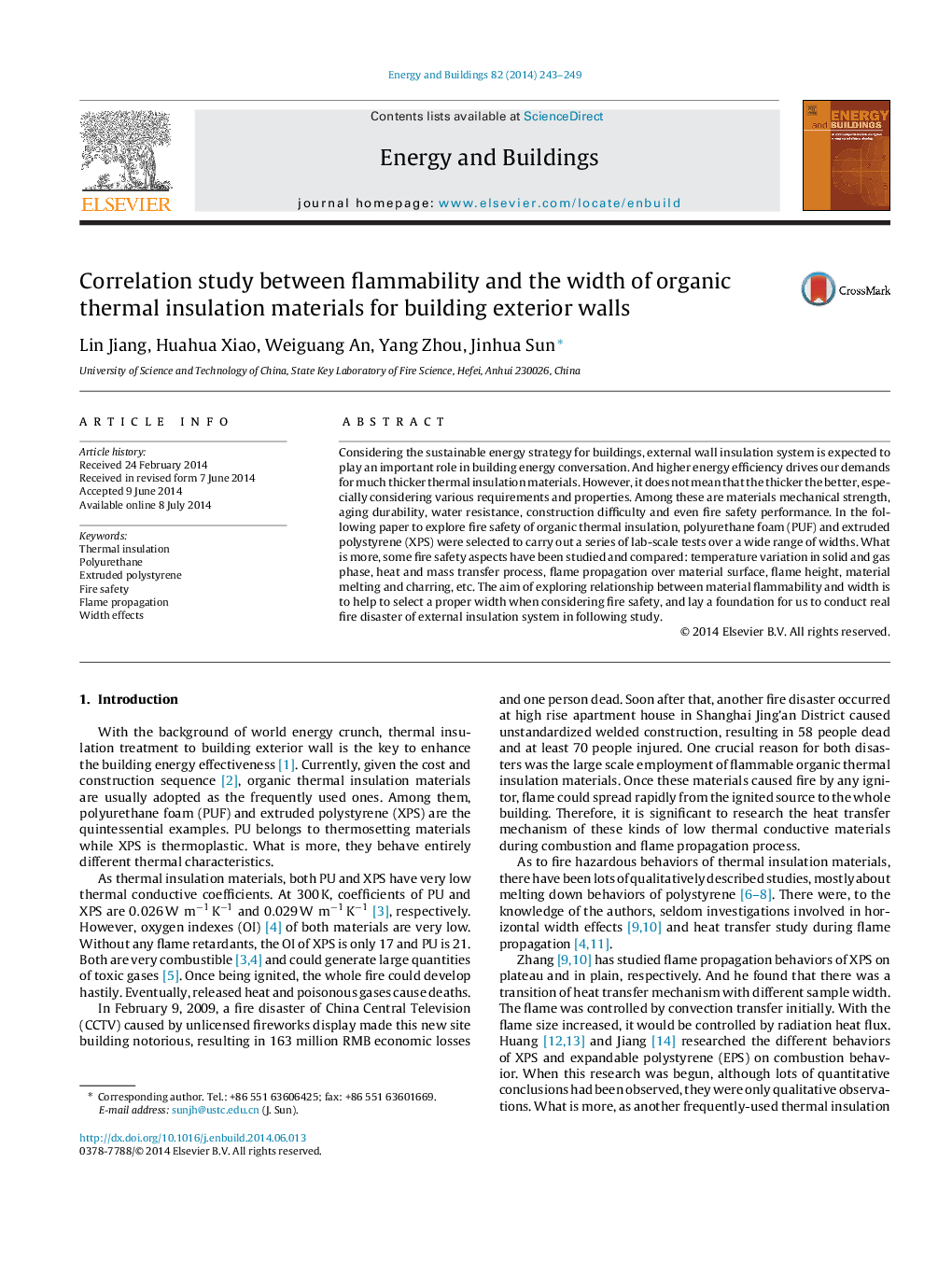| کد مقاله | کد نشریه | سال انتشار | مقاله انگلیسی | نسخه تمام متن |
|---|---|---|---|---|
| 262666 | 504047 | 2014 | 7 صفحه PDF | دانلود رایگان |
• Temperature variations in solid and gas phase were analyzed.
• The lowest flame spread rate exists for a proper material width.
• Heat and mass transfer during materials’ burning process were studied.
• Different thermal properties made different fire safety performance.
Considering the sustainable energy strategy for buildings, external wall insulation system is expected to play an important role in building energy conversation. And higher energy efficiency drives our demands for much thicker thermal insulation materials. However, it does not mean that the thicker the better, especially considering various requirements and properties. Among these are materials mechanical strength, aging durability, water resistance, construction difficulty and even fire safety performance. In the following paper to explore fire safety of organic thermal insulation, polyurethane foam (PUF) and extruded polystyrene (XPS) were selected to carry out a series of lab-scale tests over a wide range of widths. What is more, some fire safety aspects have been studied and compared: temperature variation in solid and gas phase, heat and mass transfer process, flame propagation over material surface, flame height, material melting and charring, etc. The aim of exploring relationship between material flammability and width is to help to select a proper width when considering fire safety, and lay a foundation for us to conduct real fire disaster of external insulation system in following study.
Journal: Energy and Buildings - Volume 82, October 2014, Pages 243–249
